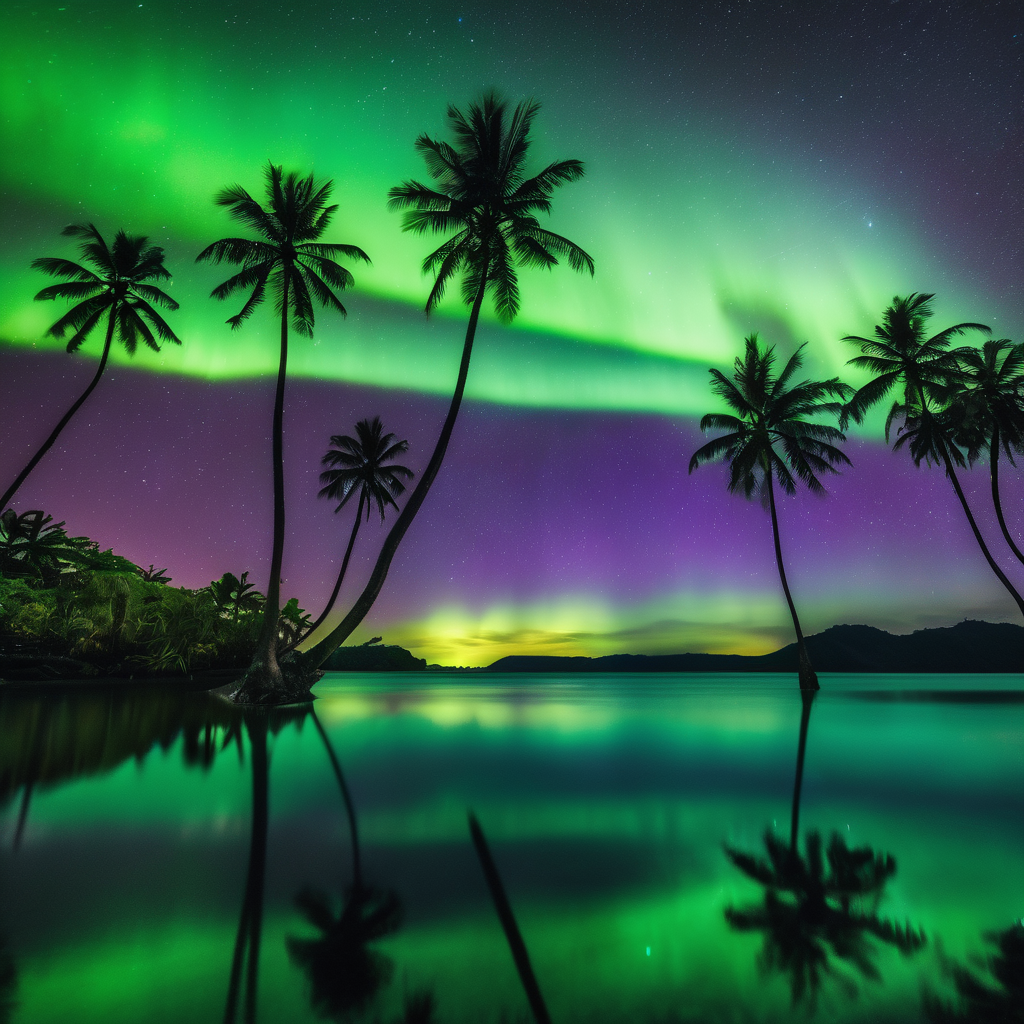On a frigid Tuesday night, when temperatures dipped to ten below zero in Fairbanks, a spirited crowd gathered at a scenic overlook on the University of Alaska Fairbanks campus, eagerly awaiting the mesmerizing display of the aurora borealis. Among them was Fatin Pasha, a recent transplant from Missouri, who was drawn to Alaska’s northern lights. Despite his excitement, Pasha initially struggled to see the aurora, only catching a faint reddish glow in the sky. “I’ve seen some beautiful pictures, though,” he remarked, determined to wait in the biting cold for a clearer view.
As time passed, the initial blush of color transformed into a more vibrant scarlet, with pulsating pillars of light illuminating the night sky. This extraordinary light show wasn’t confined to Alaska; it extended across vast distances, reaching as far south as the Florida panhandle.
The northern lights were the result of a remarkable series of x-class solar flares, which began making waves on Monday. These intense solar events produced an enormous plasma cloud known as a coronal mass ejection (CME), including a particularly menacing “cannibal” ejection, so dubbed due to its tendency to merge with other plasma clouds in its path.
According to the National Oceanic Atmospheric Administration, x-class flares pose serious risks, capable of disrupting satellite communications, GPS systems, and even leading to power grid failures. Mark Conde, a space physicist at the University of Alaska Fairbanks, described the ongoing solar activity as one of the most significant events he has observed in his career. He noted that the third wave of the CME struck around 11 a.m. Tuesday, causing temporary disruptions in monitoring systems and hindering his data sharing.
Conde reflected on a similar solar storm that had previously knocked out around 40 SpaceX satellites in February 2022, emphasizing that those satellites were particularly vulnerable due to their low-altitude orbits during the storm. This current wave, however, boasted a record speed of 870 miles per second—making it especially noteworthy.
While the inaugural shows of the aurora were anticipated for Tuesday and Wednesday, forecasts indicate that the dazzling lights may remain visible for several days. Conde optimistically mentioned that there might be another one or two CMEs before the solar cycle settles down. He remarked, “We have to wait another 11 years to get the next one. So the event we’re experiencing right now is certainly not an everyday occurrence.”
This unusual solar activity presents a unique opportunity for both seasoned aurora watchers and newcomers alike, reminding us of the breathtaking natural phenomena that our universe has to offer.
